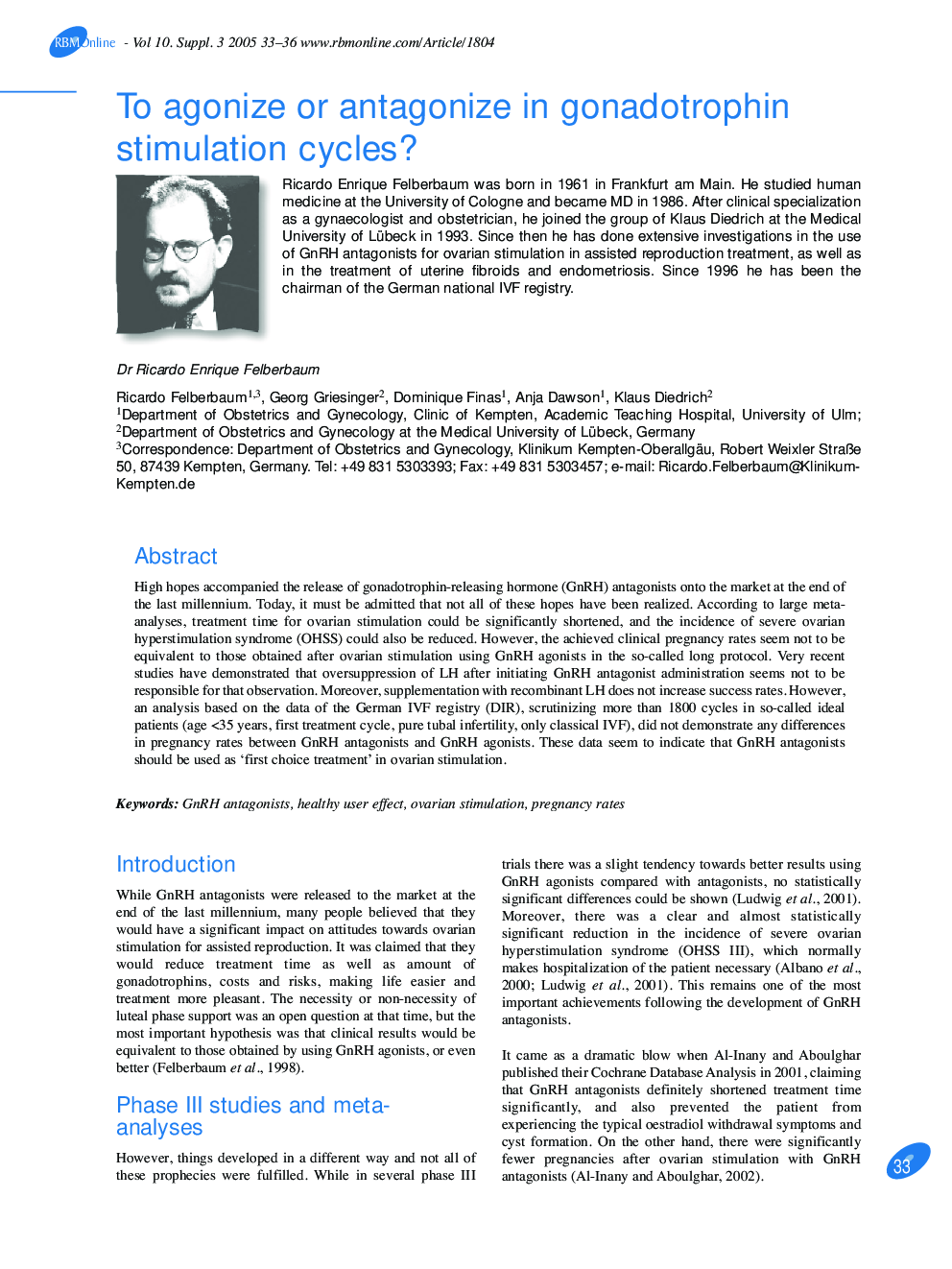| Article ID | Journal | Published Year | Pages | File Type |
|---|---|---|---|---|
| 9334958 | Reproductive BioMedicine Online | 2005 | 4 Pages |
Abstract
High hopes accompanied the release of gonadotrophin-releasing hormone (GnRH) antagonists onto the market at the end of the last millennium. Today, it must be admitted that not all of these hopes have been realized. According to large meta-analyses, treatment time for ovarian stimulation could be significantly shortened, and the incidence of severe ovarian hyperstimulation syndrome (OHSS) could also be reduced. However, the achieved clinical pregnancy rates seem not to be equivalent to those obtained after ovarian stimulation using GnRH agonists in the so-called long protocol. Very recent studies have demonstrated that oversuppression of LH after initiating GnRH antagonist administration seems not to be responsible for that observation. Moreover, supplementation with recombinant LH does not increase success rates. However, an analysis based on the data of the German IVF registry (DIR), scrutinizing more than 1800 cycles in so-called ideal patients (age <35 years, first treatment cycle, pure tubal infertility, only classical IVF), did not demonstrate any differences in pregnancy rates between GnRH antagonists and GnRH agonists. These data seem to indicate that GnRH antagonists should be used as 'first choice treatment' in ovarian stimulation.
Related Topics
Health Sciences
Medicine and Dentistry
Obstetrics, Gynecology and Women's Health
Authors
Dr Felberbaum, Georg Griesinger, Dominique Finas, Anja Dawson, Klaus Died,
